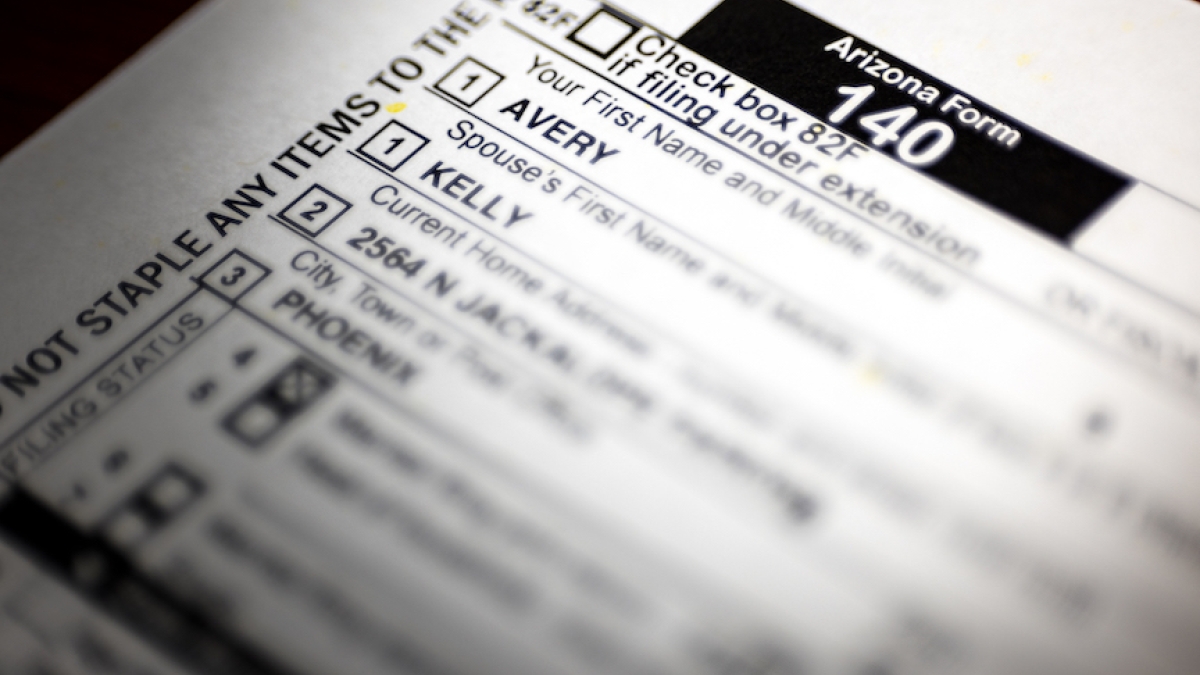Not many people look forward to April 15. But 2023 could be different.
Every year on that date, qualifying citizens are required to file their federal and state income taxes. Most grumble when they have to cut a check. But this year, there might be less of that and more rejoicing from some Arizonans, according to an Arizona State University professor.
Economist Dennis Hoffman, director of the L. William Seidman Research Institute at ASU’s W. P. Carey School of Business, said state legislators have made a point to ensure more dollars flow back into the pockets of taxpayers than the other way around.
But, according to Hoffman, the impact may have consequences down the road.
ASU News spoke to Hoffman about the latest tax laws and codes, how we got here and what to expect come Tax Day, which actually falls on April 18 this year.
Dennis Hoffman
Question: What are the changes in the individual income tax for Arizona?
Answer: The primary changes in the Individual Income Tax (IIT) for Arizona are a tax rate cut to 3% for 2022 for most filers and 2.5% in 2023 and beyond. This new 2.5% rate will apply to all filers in 2023 and beyond.
Q: What was the rationale for implementing the changes?
A: Policymakers have decided that progressive income tax rates were unfair, at least to higher-income filers, and a new lower rate should apply.
Q: How will these changes impact my family and me as taxpayers? And when?
A: The impact depends on your income level. Low-income taxpayers will see very little change. Middle-income taxpayers may see a 10% reduction in taxes, while the wealthy in Arizona will see a 40% tax cut or more when the cuts are fully phased in. Starting this spring, taxpayers will first see the impact of lower withholding rates for their paychecks. They will also pay a lower final payment and/or receive a higher refund this spring against their 2022 tax liabilities. And in the spring of 2023, refunds will be up again for most taxpayers.
Q: How will these changes impact me and my family as consumers of public services, e.g., education, public safety, health and other related social services? And when?
A: While most everyone likes tax cuts, the longer-term impacts will be felt during the next significant economic downturn. Legislators cut taxes in the mid-1990s, the mid-2000s and then again in the last two years. The impacts of the previous two rounds of cuts hit the Arizona state budget five to seven years after the cut. After the cut, less money was available for schools, public safety, social programs, universities, etc. Those most dependent on these programs experience the most harm from the revenue deficiency. So, cutting taxes for high-income people benefits the wealthy while the loss of revenue generally hurts low-income people.
Some argue that the rate reductions were put in place to increase economic growth in that state. There is little empirical evidence to support the claim since growth was typically faster prior to each round of cuts. But Arizona has historically been among the nation’s growth leaders both before and after each round of tax cuts. Despite robust overall income and population growth, the state regularly experiences challenges in meeting public-sector needs in education, health care, social programs and public safety. The relentless campaign to reduce Arizona tax rates to zero significantly contributes to these challenges.
Q: When did the Arizona Legislature vote on this issue? I don’t remember reading much about it.
A: Ironically, there was no actual vote to reduce all personal income taxpayer rates to the low 2.5% flat rate. When the rate was enacted, Proposition 208 was presumed to be the law of the land. Hence, high-income taxpayers were slated to pay, after enacted credits, a top rate of 4.5% when the flat rate was passed — 1.5% to the state and 3% to the Prop. 208 coffers. When Prop. 208 was overturned in the courts, the “special treatment” for taxpayers impacted by Prop. 208 fell off the books, and the 2.5% rate was, by default, applied to all filers. But the vote on the flat tax occurred before the demise of Prop. 208, so no legislator cast a vote that specifically took a millionaire’s rate from 4.5% to 2.5%. It happened de facto after Prop. 208 was ruled unconstitutional by the courts.
Top photo illustration by Charlie Leight/ASU News.
More Business and entrepreneurship
W. P. Carey School of Business celebrates new center and degree program for real estate, a vital industry for the state
As Arizona grows, so does the demand for places to live, work and connect. And with over 14% of the state's gross domestic product attributed to the real estate market, it's a crucial industry for…
Sustainability leader and ASU alum honored for transforming business with a people-first approach
Long before Jim Fish ('86 BS in accountancy) became president and CEO of WM — formally Waste Management — in 2016, he recognized that the higher he climbed the corporate ladder, the greater the…

ASU business students take on the big leagues
Each year, sports fans from across the country flock to Arizona to attend major events like the Waste Management Phoenix Open, Fiesta Bowl and Cactus League Spring Training. These mega-events…



